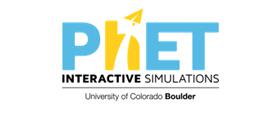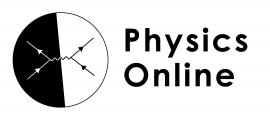Change of motion
Moving on with forces to explore with your students the idea that a resultant or unbalanced force causes a change in motion requires them to understand the difference between scalar and vector quantities and you will need to use vector diagrams again.
A common misconception for students is that the greater weight of a more massive object causes it to accelerate more than a less massive object. You have to tackle and resolve this for your students. This video can be used to help as can very precise and correct use of terms such as force and acceleration.
The topic becomes meaningful if it is related to lots of everyday situations that students can identify with and so better improve their grasp of the underlying physics. Newton’s laws of motion are a formal expression of this physics and you should aim to include them in covering the topic.
The moment of a force which is the turning effect that a force can have on an object that is able to rotate about a pivot point can be confused by name with momentum. It is worth dealing with this concept at this stage of the topic.
Math skills can be practised by making calculations of the accelerations associated with these resultant forces, recalling or selecting the relevant equations to do so.
Whilst this list provides a source of information and ideas for experimental work, it is important to note that recommendations can date very quickly. Do NOT follow suggestions which conflict with current advice from CLEAPSS, SSERC or recent safety guides. eLibrary users are responsible for ensuring that any activity, including practical work, which they carry out is consistent with current regulations related to Health and Safety and that they carry an appropriate risk assessment. Further information is provided in our Health and Safety guidance.
Motion 11-14
Although listed at 11-14 this is a comprehensive and valuable resource for GCSE teaching. There is an activity in Resultant force zero on bubbles rising through water called Measuring constant speeds that you could use to deliver the lesson shown in the video above. The activity Trolley forces in Changes in speed would make a good starting point for discussion on forces causing motion.
Physics for Non-Physicists: Forces
A video to support teachers, who are not physics specialists, with the teaching of forces. In this video a group of physics non-specialists are exposed to a number of approaches to the teaching of forces. This resource is aimed at the teacher, not their students.
Forces and Motion Basics
This simulation allows students to explore the forces at work when pulling against a cart and pushing a refrigerator, crate, or person. Create an applied force and see how it makes objects move. Change friction and see how it affects the motion of objects.
Secondary Science Using ICT: Investigating Acceleration Using Light Gates
A video aimed at teachers that gives guidance and shows how to use a data logger and a single light gate to do an experiment that students will find easy to follow where they measure a series of speeds and can then determine acceleration. Students use light gates to accurately capture the speed of the passing trolley at different positions on the slope and analyse their results.
Forces and Motion: The Physics of Car Crashes *suitable for home teaching*
This video clip from the Thatcham vehicle testing centre uses slow motion filming to capture the impact when cars crash. The presenters discuss the ideas of inertial mass and Newton’s first two laws of motion in explaining the importance of wearing a seatbelt during a collision.
Machines 11-14
This IOP resource will provide you with material for you to teach effective lessons on moments. From the first demonstration of lifting a student off the ground using a plank as a lever to the last one on stability they are all worth considering. Although on a safety point consider using a wide (and long) board rather than a plank for lifting a student to avoid the risk of a plank pivoting in a horizontal plane as well as a vertical plane.
Investigating Newton's Second Law of Motion
This web link takes you to a comprehensive set of instructions to investigate Newton's second law of motion. The basic experiment can be done differently with stopwatches and metre rules or ticker timers; in this case a generic set of instructions is given for use with light gates and data loggers. Regardless of which choice of data loggers you have, you should obtain a good set of data to test the equation.
Career Clips: Forces and motion in computer games *suitable for home teaching*
From the Institute of Physics, this seven minute film showcases how an understanding of forces and motion is required to develop certain video games. This is an exciting possibility for some students wondering what their options might be for studying physics.
Formula for Thrills
This interactive online game from Siemens sets students a series of challenges to design a roller coaster which reaches the end of the ride at a safe speed. Students use problem solving and mathematical reasoning skills to change some of the track features and see how this affects the speed of the rollercoaster.
Acceleration and force
A pair of videos that explains how to demonstrate the Newton’s Second Law required practical. The first demonstrates an experiment we can do in order to investigate the relationship between the acceleration of an object (with a constant mass) and the applied force. The second explains how to interpret the data, plot the graph and determine if there is a relationship between acceleration and applied force.
Acceleration and mass
A pair of videos that explains how to demonstrate the Newton’s Second Law required practical. The first demonstrates an experiment we can do in order to investigate the relationship between the acceleration of an object (with a constant force) and its mass. The second explains how to interpret the data, plot the graph and determine if there is a relationship between acceleration and the mass of the object.
Experimenting with a trolley
In this video independent and dependent variables are discussed, before experimenting with a trolley on an inclined ramp. The data is then graphed and analysed to investigate any relationship between ramp height and trolley speed. This is a GCSE Physics Practical.
Terminal speed
The terminal velocities of cupcake cases are calculated in this video and a graph of mass versus terminal velocity is plotted to investigate the relationship.







